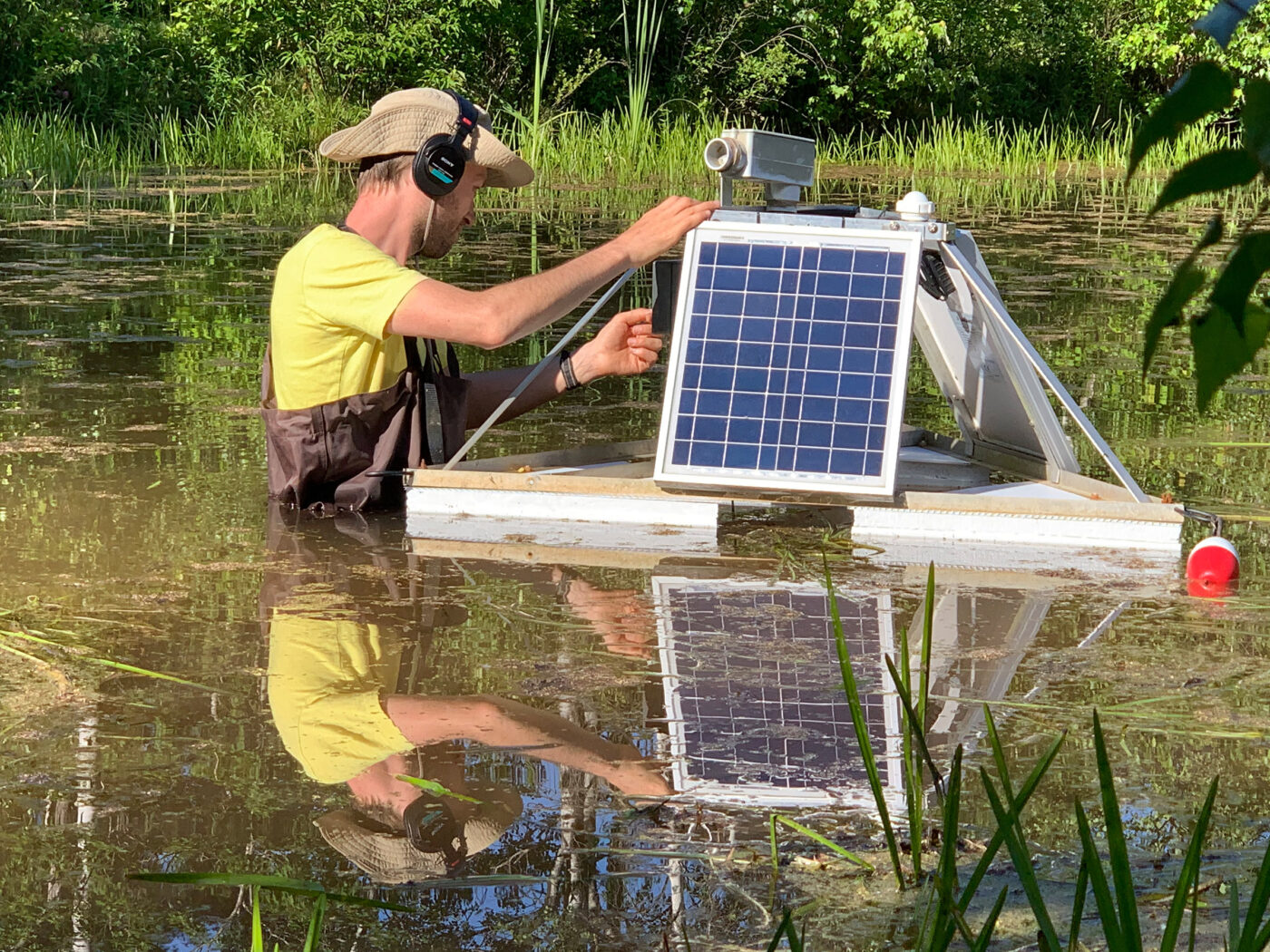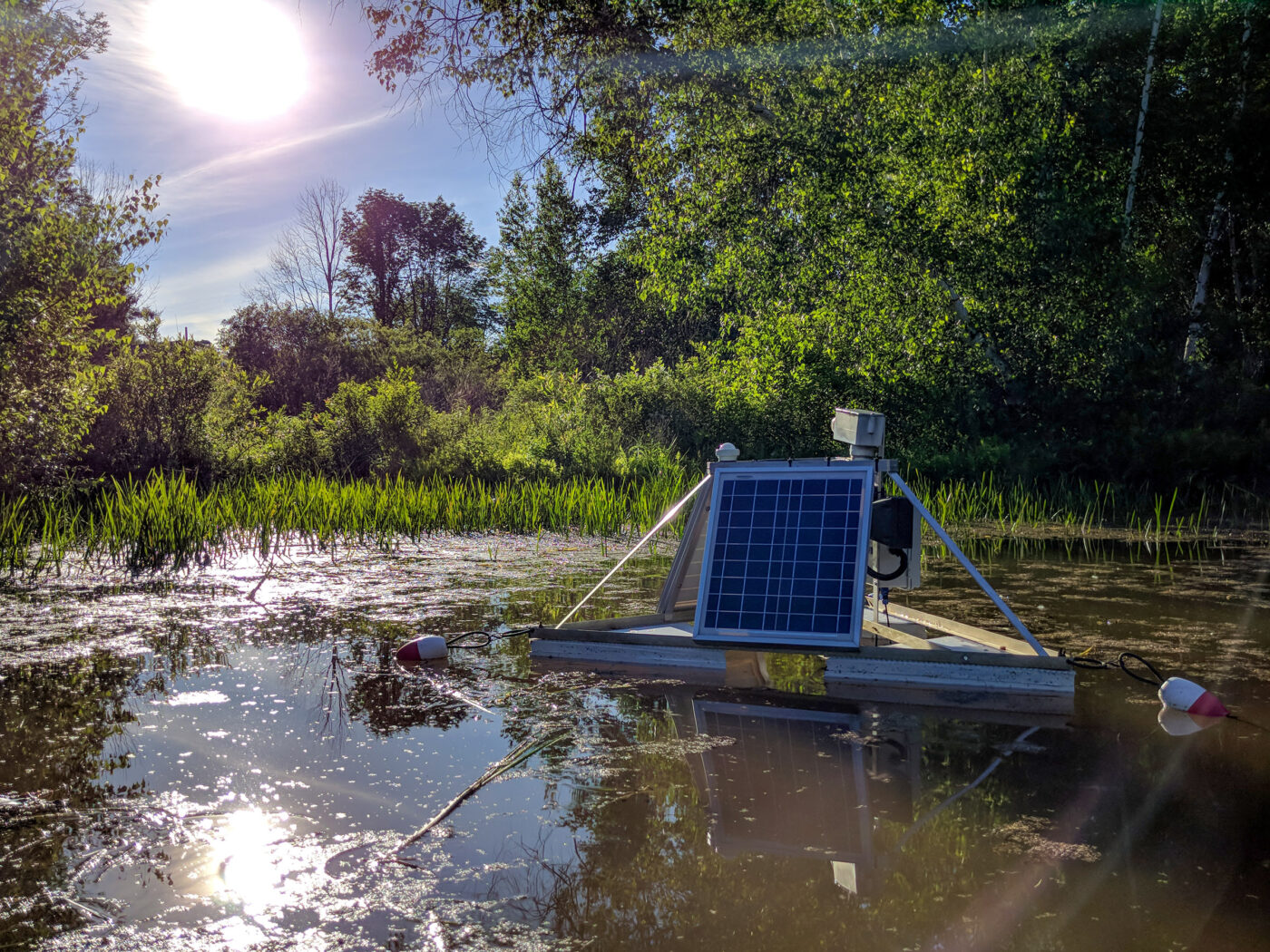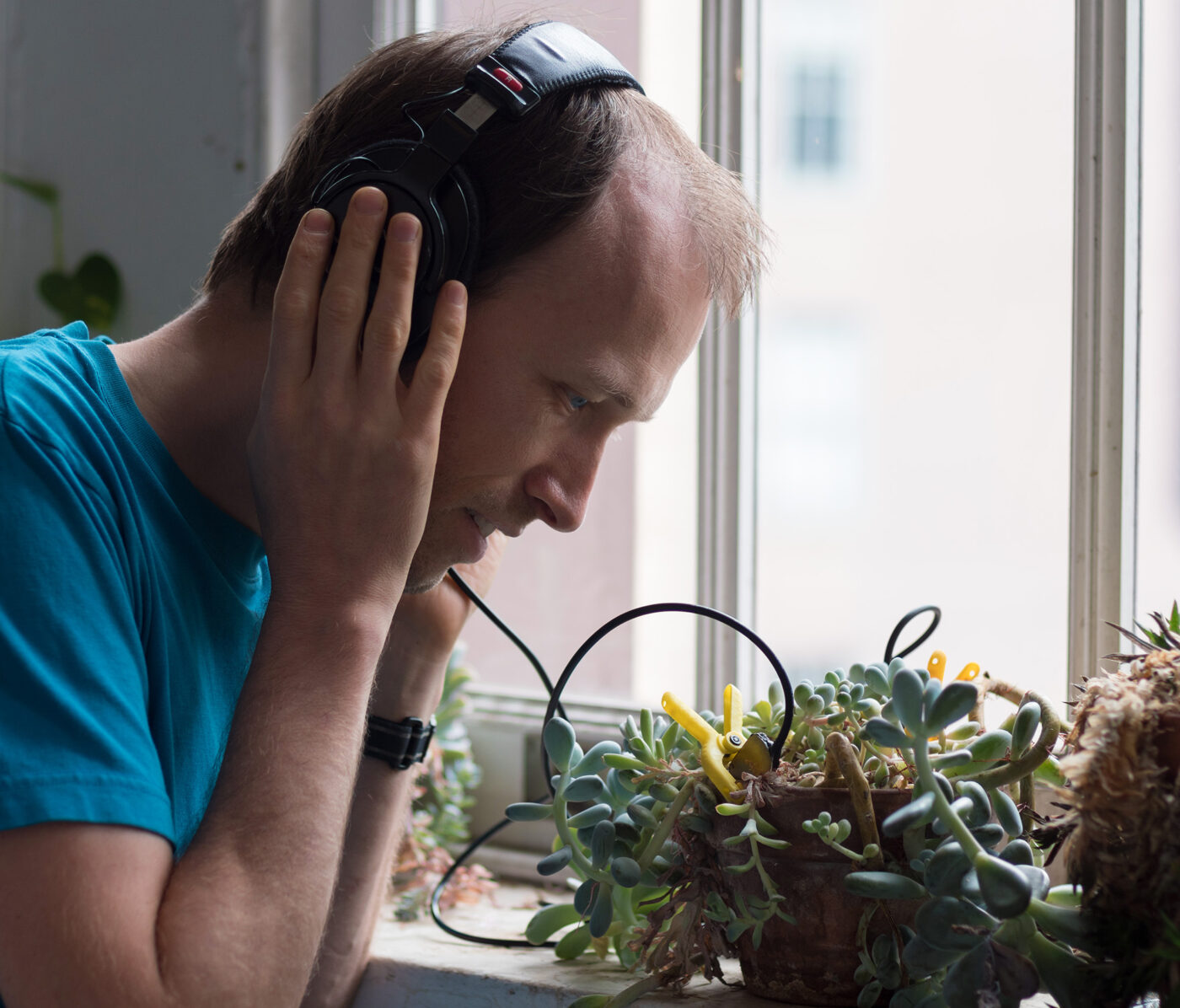Somewhere in Acra, New York, a rover-esque contraption skims the surface of a pond and listens. It captures the bubbling, gurgling, buzzing, and spontaneous sounds that happen underwater daily, from dawn to dusk. Zach Poff, a media artist, created this ongoing project, which is broadcast online for anyone to encounter. We tracked Zach down and asked him to share what this sculpture has taught him about anticipating future technologies, collaborative structures, and the perks of deep listening.
As I sit down to write, the future seems precarious. The world has been paralyzed by a deadly virus and our leaders refuse to engage in real conversations about the climate emergency and systemic racism. Collective action has been hampered by the attention economy as algorithms sort us into self-segregated online communities. Through my sound work I have been exploring an alternative engagement with technology: open works that rely on collaborative or aleatoric structures more than individual authorship. In my Pond Station installation (ongoing since 2015), I livestream the underwater sounds of a pond at Wave Farm, a transmission arts organization in New York state. The installation invites us to practice listening to our more-than-human neighbors as carefully as we listen to our own speech and music.
Vision enforces a separation between subject and object and imbues the gaze with a mirage of knowledge. To see something is to believe that you know it completely. Sound is less straightforward. It bends around obstacles and leaks through borders, complicating binaries like interior and exterior. In his book Audio-Vision, Michel Chion writes “…we can trace the evolution of a scraping noise (accelerating, rapid, slowing down, etc.) and sense changes in pressure, speed, and amplitude without having any idea of what is scraping against what.” This suggests a form of sonic knowledge that operates outside the indexical gaze. In a listening encounter we can develop affective connections without assuming that our perspective is singular or complete. We can embrace our subjectivity rather than erasing it, acknowledging that others may be hearing the same vibrations but listening with other ears.










